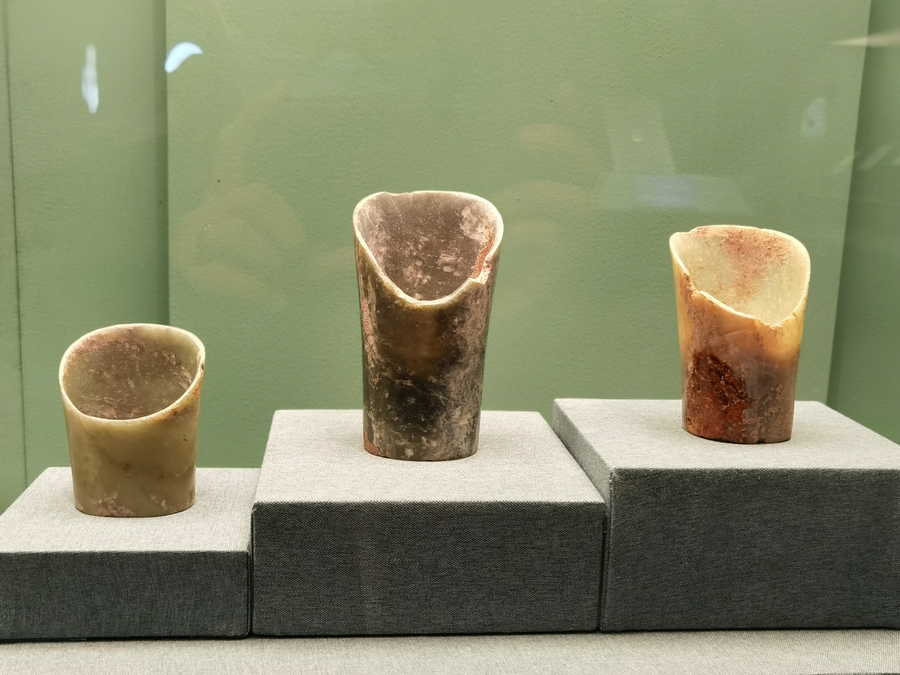

Important archaeological discoveries of societies dating back 5,000 to 6,000 years have been made in many regions of China.
Among them, Hongshan Culture sites are among the oldest and are helping to form a relatively comprehensive, systematic archaeological picture related to the origin of the Chinese civilization.
Since the 1980s, large-scale sacrificial ceremonial grounds have been found at the Niuheliang archaeological site in Chaoyang city, Northeast China's Liaoning province, with excavations uncovering an altar, a temple, rubble mound tombs, jade ritual ware and painted potteries.
Archaeologist Su Bingqi (1909-97), an iconic figure in the field, compared the sacrificial sites with the Temple of Heaven in Beijing, which was built during the Ming Dynasty (1368-1644), and noted that the latter inherited some of the characteristics of the former.
"The front altar at Niuheliang is like the Circular Mound Altar of the Temple of Heaven and its back is similar to the square base of the Hall of Prayer for Good Harvests," said Su. "It is a miracle that the light of the culture more than 5,000 years ago has shone so wide and lasted for so long."
The unearthed jade ritual ware and painted pottery sacrificial vessels, depicting dragon, phoenix, turtle and other animals, reflect the institutionalization of the sacrificial rites of Hongshan Culture and the systematization of beliefs related to these practices.
It is also consistent with the interpretation put forward by modern scholar Wang Guowei (1877-1927) of the original meaning of li (ritual), which meant "to serve God with jade". It shows that jade is the earliest ritual ware, and the jades of Hongshan Culture are representatives of this kind.
The altar, temple, mound tombs and the jade ritual ware indicate a dramatic change in the social structures, ideas and beliefs in the Western Liaohe River Basin 5,000 years ago. Hongshan Culture inaugurated the period of "ancient states" in the country.
Hongshan Culture also had interactions with other cultures in China, learning from the Yangshao Culture on the Central China Plains and the grassland cultures in western China.
The painted pottery vessels — a representation of Yangshao Culture — used by the Hongshan people have fully reflected the inclusiveness of the northeastern culture that was among those most closely linked to the Yangshao Culture.
The most common forms of painted pottery found at Hongshan Culture sites are combinations of the shapes of flowers, in Chinese homophonic of China, and dragons, partly accounting for the reason why modern Chinese people refer to themselves as "descendants of the dragon".
The Hongshan Culture is known as the "tap root" of the ancient Chinese culture. It has great influence on its time and the later ages.
The fact that li originated from the Hongshan Culture is not only a reflection of the characteristics of the origin of Chinese civilization, but also an evidence of the continuous development of Chinese civilization for 5,000 years, which played a special role in the formation of the pluralistic unity of China.
The author is the honorary director of Liaoning Provincial Institute of Cultural Relics and Archaeology.